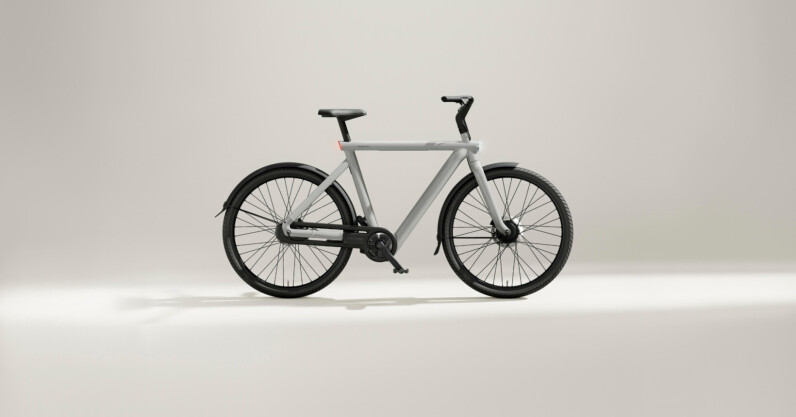Dutch ebike maker VanMoof has begun selling ebikes on its own website once more, following an almost year-long hiatus after it went bankrupt in July last year.
The models on offer are refreshed versions of the S5 and A5, which were first released in 2022. Although the upgraded ebikes look exactly the same, they’ve been re-engineered in almost every aspect, says the company’s co-CEO Eliott Wertheimer.
While this is just the beginning of VanMoof’s lengthy relaunch, the ability to sell bikes directly once more “represents an enormous milestone for us as a company,” Wertheimer told TNW.
Before declaring bankruptcy, VanMoof had been making major losses on its ebikes for years. The high-tech, proprietary parts that made the bikes so appealing — but meant they could only be serviced by VanMoof itself — proved to be the company’s Achilles heel.

The <3 of EU tech
The latest rumblings from the EU tech scene, a story from our wise ol’ founder Boris, and some questionable AI art. It’s free, every week, in your inbox. Sign up now!
Overnight, hundreds of thousands of riders across the world were left with a software-heavy bike worth thousands of euros that could not be fixed or upgraded anywhere.
Getting VanMoof back on track
Thankfully, for those (if any?) still loyal to the VanMoof brand, the company was bought out of administration three months later. The new owner is LaVoie, an e-scooter maker that falls under McLaren Applied, an offshoot of the British motorsport racing business.
LaVoie inherited the tough task of putting a cash-hungry brand with a load of angry customers back on track.
Released yesterday, the refreshed S5 and A5 models include new firmware that has fixed some bugs and improved connectivity between the bike and the smartphone app. On the hardware side, the ebikes have more robust waterproofing, a stronger motor bracket, and a new saddle connector to prevent the seat from lowering as you ride.
The ebikes also include some new features including a light that blinks when you decelerate and the option to configure the rear light to indicate as you turn.
The bikes now on sale were either made from scratch or are refreshed versions of existing bikes that were sitting with resellers or creditors.
McLaren Applied has been directly involved in testing these new bikes. And instead of being shipped directly from the factory to customers, as used to be the case, each bike must go through two quality control centres before going on sale.
“We chose to upgrade the five series because it is still a super reliable product with tech that’s years ahead of any competitor,” said Wertheimer, who used to hold the same position at LaVoie prior to the merger.
VanMoof’s new management chose to discontinue the 3 and 4 series because of “deep-rooted” serviceability issues.
Aside from the bikes themselves, the new owners have revamped almost every aspect of the brand’s business model.
Rebuilding trust
Servicing is no longer carried out at VanMoof stores, but at a series of approved dealerships that now numbers 80 across the Netherlands, Germany, Belgium, France, and the UK.
Owners of the 3 series and beyond can repair their bikes at these new centres. Everyone else will have to hope a mechanic has the expertise to fix their bikes. To this end, VanMoof has made servicing manuals for the 1 and 2 series publicly available.
The new S5 and A5 models retail for €3,298. They are only available for now to customers that are close to service shops, which are mainly in the Netherlands and Germany. However, sales are expected to expand to more European countries over the next month or so.
“Perhaps our biggest priority right now is expanding our network of partners so that new and existing owners can get their bikes repaired and serviced,” Wertheimer said.
“Delivering a reliable service will be crucial to building back trust in the brand.”
However, VanMoof is still a complex bike reliant on proprietary parts. And competition from startups with similar offerings like Belgium’s Cowboy or Estonia’s Ampler Bikes is stiffer than ever.
Nevertheless, you’ve got to admire the progress VanMoof’s owners have made so far. In less than a year, they’ve managed to resume delivering spare parts, open dozens of third-party service centres, and now restart ebike sales.
“From the beginning, we wanted to take the magic of riding VanMoof bikes and couple that with a better customer experience, after-sales servicing, and reliability,” Wertheimer said.
“There’s still a long way to go but I think we are definitely headed in the right direction.”



